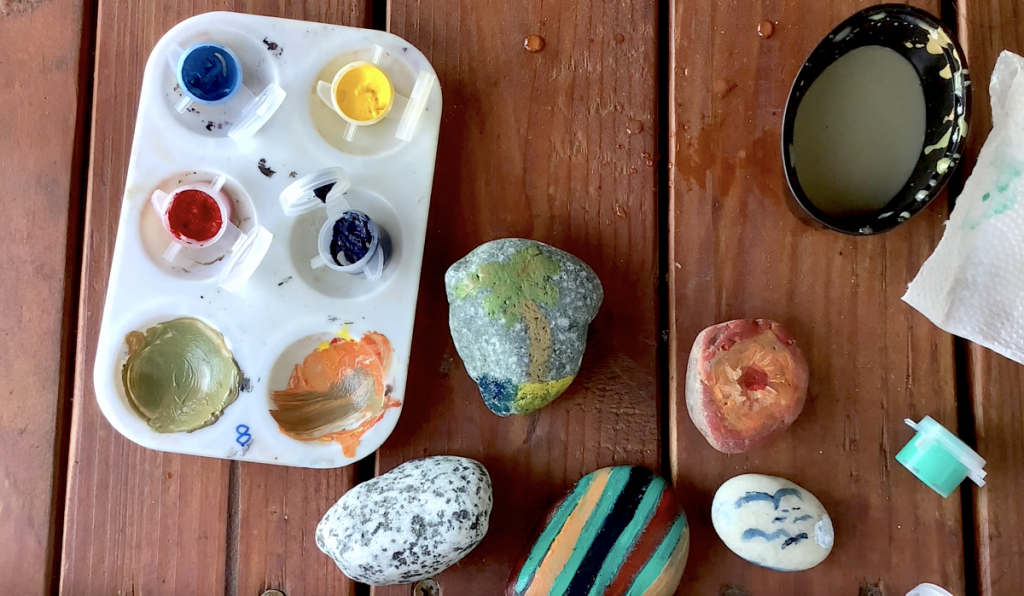Lesson Objectives: In this unit, students will learn about death in the Jewish lifecycle. They will discuss how death is presented in biblical texts and the modern rituals that surround mourning. During this unit’s hands-on project, students will decorate memory stones.
Guiding Thematic Questions:
- What sorts of traditions, rituals, and prayers surround death in various religious traditions?
- Why might different cultures and religions have created such mourning practices?
- How did Israelite burial practices differ from the practices of their ancient neighbors?
- What role does death play in Biblical stories?
Historical Context:
- The ancient Egyptian practice of mummification, embalming the dead to preserve their bodies, was an essential practice because they believed it a requirement to achieve immortality after death. Mummified bodies were buried with grave goods that were thought to be necessary in the afterlife. Across the Ancient Near East, leaving a body unburied was regarded as taboo.
- Ossuaries were used when burial space was scarce, as they were able to carry the remains of more people than a single coffin.
- Jewish burial practices varied by class during the Second Temple period. For wealthier people, remains might be buried in decorated limestone ossuaries, often including inscriptions to identify the person to whom they belonged, and placed in burial caves.
Fun Facts:
- Embalming and cremation are discouraged/forbidden in most Jewish burial practices. Jewish law prohibits defiling dead bodies– Jewish authorities have interpreted this to include embalming and cremation– and outlines very detailed procedures for handling them prior to burial. Cremation has also been historically associated with pagan practices.
- There is a Jewish custom of placing stones on graves and there are many interpretations of how this practice came to be. Jewish priests (kohanim) and their descendants are said to become ritually impure if they come within 4 feet of a dead body, so some believe that Jews began to mark grave sites with rocks to indicate the presence of a corpse for a passing kohen. Others believe that rocks hold a soul down in this world or prevent demons or golems from getting into the graves. Some see rocks as more permanent markers of the person’s memory and legacy in contrast to more ephemeral mementos such as flowers.
Object Images:
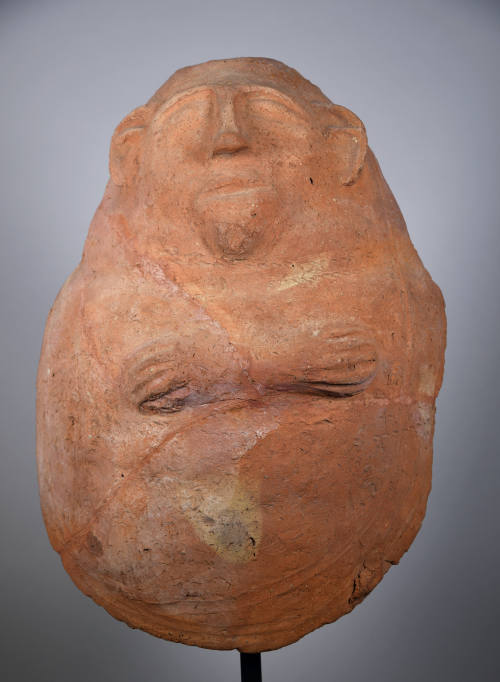
Face from a Pottery Coffin
Canaanite
2000-1600 BCE
Ceramic
17” x 13.5”
Carlos Museum, Emory University
2018.3.1
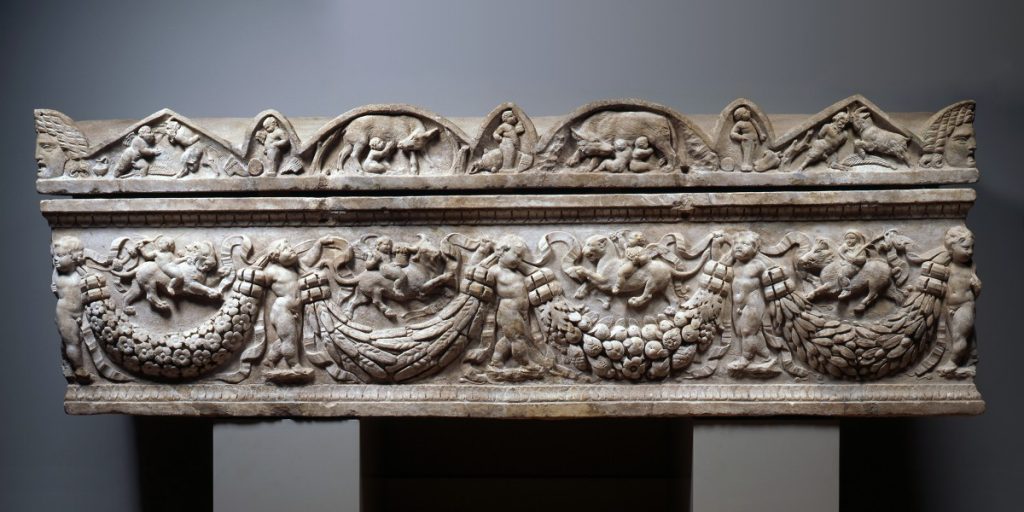
Sarcophagus
Roman
Mid 2nd c. CE
Marble
3’ x 7’
Carlos Museum, Emory University
1999.1.7
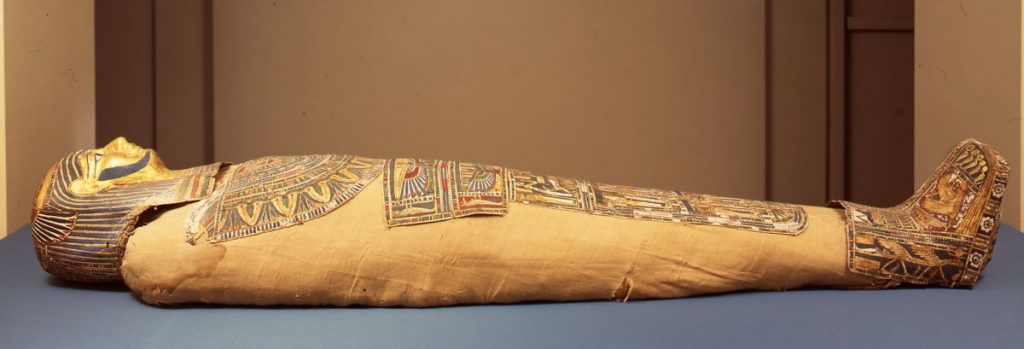
Mummy of Male
Egyptian
167-30 BCE
Linen, painted cartonnage, remains
Carlos Museum, Emory University
1921.6
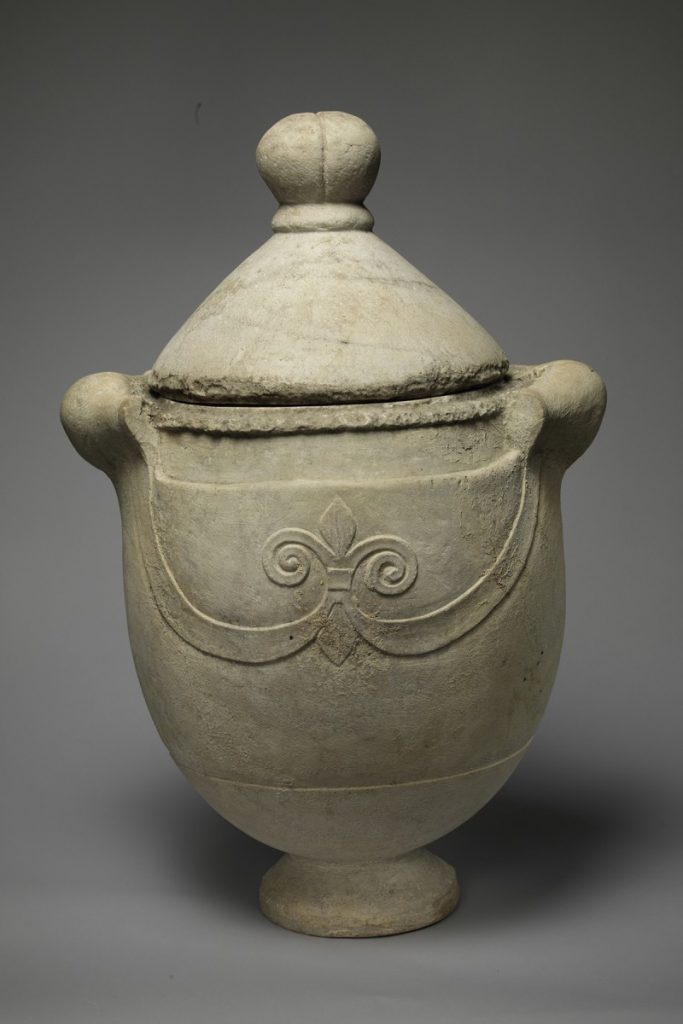
Cinerary Urn
Roman
70-90 CE
Marble
20”
Carlos Museum, Emory University
1989.2.5
Classroom Discussion Questions:
What is an ossuary? What is a sarcophagus? What is cinerary urn?
What naturally occurring land formation were tombs typically carved into?
What is mummification? Embalming?
What are some Jewish ritual practices and customs surrounding death and mourning?
Project: Memory Stones
Materials:
- rocks/pebbles
- acrylic paint
- brushes
- water
- cleaning supplies
Instructions:
- provide each student with a rock, paints, and brushes
- decorate your memory stone with images that relate to a family memory, a person you have lost…
